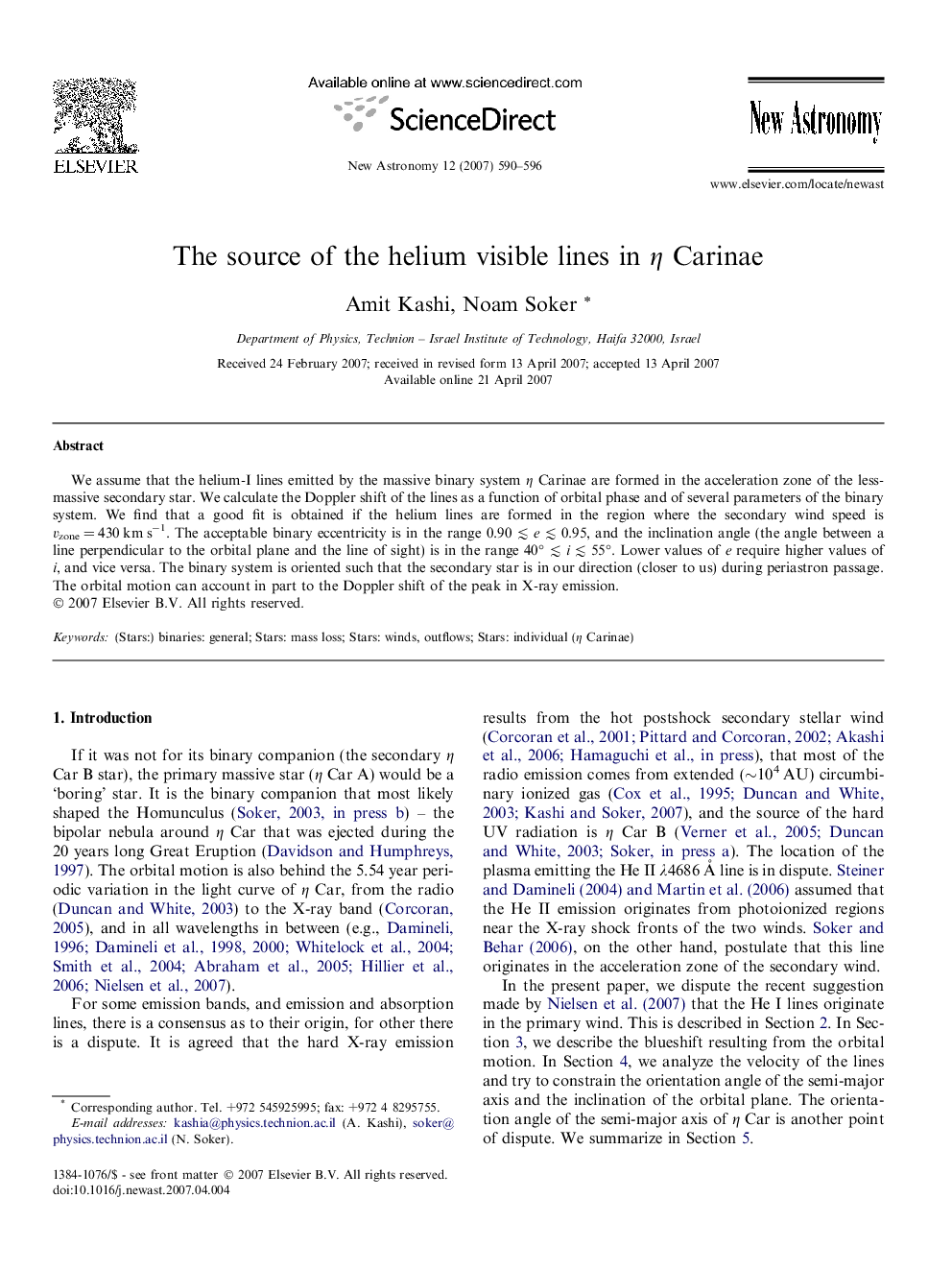| Article ID | Journal | Published Year | Pages | File Type |
|---|---|---|---|---|
| 1779417 | New Astronomy | 2007 | 7 Pages |
We assume that the helium-I lines emitted by the massive binary system η Carinae are formed in the acceleration zone of the less-massive secondary star. We calculate the Doppler shift of the lines as a function of orbital phase and of several parameters of the binary system. We find that a good fit is obtained if the helium lines are formed in the region where the secondary wind speed is vzone = 430 km s−1. The acceptable binary eccentricity is in the range 0.90 ≲ e ≲ 0.95, and the inclination angle (the angle between a line perpendicular to the orbital plane and the line of sight) is in the range 40° ≲ i ≲ 55°. Lower values of e require higher values of i, and vice versa. The binary system is oriented such that the secondary star is in our direction (closer to us) during periastron passage. The orbital motion can account in part to the Doppler shift of the peak in X-ray emission.
